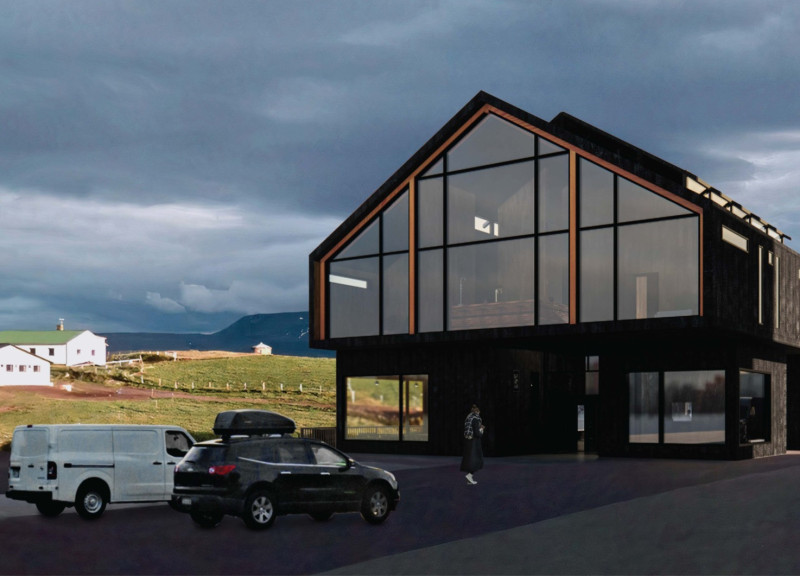5 key facts about this project
The primary function of the project is to create an adaptable space that accommodates diverse activities. This is achieved through a strategic layout that prioritizes flexibility in usage, allowing for both individual and collective functions. The spatial organization is carefully crafted, facilitating smooth circulation and interaction among users while also providing moments of privacy where necessary. The design encourages engagement, making it a catalyst for community gatherings and activities.
Key components of the project are meticulously designed to meet both aesthetic and functional requirements. The exterior facade embodies a modern expression, characterized by an intelligent interplay of materials that enhance both the visual and tactile experience. Utilization of concrete provides structural integrity, while expansive glazed areas create a seamless connection between indoor and outdoor spaces. This reduces the barrier between the building and its environment, promoting a sense of openness and accessibility.
The careful selection of materials is one of the project's standout features. The combination of glass, wood, steel, and concrete not only serves practical purposes but also contributes to a cohesive architectural language. The glass installations invite natural light, reducing reliance on artificial illumination and fostering a more sustainable approach to energy use. Meanwhile, wooden elements introduce warmth, establishing an inviting atmosphere that enhances the user experience. Steel contributes to the building's strength and durability, enabling innovative architectural expressions through slender profiles and expansive spans.
A unique design approach taken in this project is its sensitivity to the surrounding landscape. By analyzing local environmental conditions, the design optimally positions elements to harness natural light and airflow, thus promoting efficient energy consumption. This is particularly evident in the strategic placement of overhangs and shading devices, which mitigate solar gain during warmer months while allowing passive heating from sunlight in cooler periods. The architectural decisions reflect a commitment to sustainability, embracing not only the functional aspects of the building but also its environmental impact.
Incorporating local traditions and materials also forms an essential part of the design philosophy. This approach not only supports the local economy through the use of regional resources but also fosters a sense of place and identity within the community. The array of textures and colors in the materials used not only enhances the visual appeal but also pays homage to the cultural narratives inherent to the location.
As one examines the architectural plans, sections, and several design details, it becomes apparent that every aspect of this project has been thoughtfully considered to balance usability with aesthetic values. From interior finishes to exterior landscaping, each element contributes to the overarching vision of the project. This attention to detail is evident in features such as integrated seating areas, natural ventilation pathways, and accessible routes that cater to a diverse audience.
This architectural project is a comprehensive example of how design can effectively serve both form and function while remaining respectful to its context. By engaging with the project presentation, readers can explore intricate architectural ideas that further illustrate the innovative approaches taken in the design. Details such as architectural plans and sections provide deeper insights into the project’s comprehensive vision, highlighting its potential impact on the community and the environment. The careful integration of diverse design elements creates a structure that not only meets the immediate needs of its occupants but also stands as a lasting contribution to the architectural dialogue of the region.


























